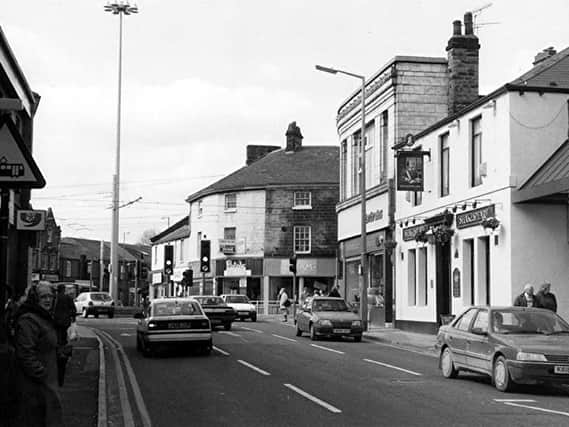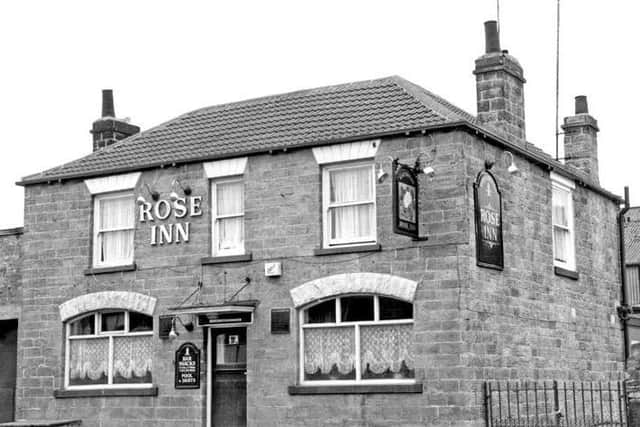Retro: Sheffield pub crawl in Hillsborough of 1871


My two drinking pals Mr Dawson and Mr Sorsby and myself have acquired a pair of electric time trousers each from e-Bay.
We have set the year to 1871 and the place Hillsborough.


This is the first part of our tour, to be completed next week.
Advertisement
Hide AdAdvertisement
Hide AdOur first port of call is the Hillsborough Inn at 2 Holme Lane. It opened in 1841, the landlord is Frederick Sykes and he’s the new landlord.
Frederick had more or less taken over a newly-furbished pub as the bursting of the Dale Dyke Dam sent a torrent of water down the valley.
The inn took the brunt of the water and it lost its windows, doors and floorboards but because the building was sturdy it stood its ground. The building is still there but is now shops.


Frederick held the licence up to 1875 when his wife Annie took it on and she ran it to 1879. Could it be that Frederick died?
Advertisement
Hide AdAdvertisement
Hide AdWe leave, turn left and walk to the Shakespeare Inn at 196 Bradfield Road.
It opened in 1854 andour landlord is German Wilson, that’s a great name isn’t it?
This pub is a fair size and is very busy, German held the licence until 1876.
I would love to know why he was called German, perhaps someone can explain. He did serve a good pint of John Smiths, no matter what his name.
Advertisement
Hide AdAdvertisement
Hide AdWe drink up and step into the busy road and walk further down the road to the Old Blue Ball, opened in 1825 which stands just a few yards away.
Another great name, Spirley Burkinshaw, holds the licence. It has its own bowling green as many pubs did at the time.
At the time of the flood, Spirley and his good lady wife were upstairs working when the wall of water hit. They survived but the water left a large tree in the pub and they lost their stables.
Spirley held the licence until 1882 when he died and his wife Mary Annie took it over from 1883 until 1913.
Advertisement
Hide AdAdvertisement
Hide AdThe pub’s back to normal now but I can still hear a ‘do you remember the flood?’ conversation starting up.
I would love to stay and listen, but time presses on. On leaving we shoot down Owlerton Green and head for the Victoria at 923 Penistone Road, opened just six years before our visit in 1865.
Our man in charge is Thomas Ralph who took the pub in 1868 and held it until 1875 when he seems to have passed away then his wife Sarah took the reins until 1879.
The pub itself is fine looking with double bay windows. Sadly it was demolished in 1982 for road widening.
Advertisement
Hide AdAdvertisement
Hide AdWe leave the Victoria and turn to our right and walk to the next pub at 851 Penistone Road - this is the Sportsman Grove, latterly called the Sportsman Group.
This pub was selling beer in 1833 and held bare-knuckle fights, cock fighting and other banned sports in its day.
It survived well into the 20th century when it was demolished.
John Hollings is the licence holder when we visit, he arrived in 1854 and moved on in 1875.
This is another very large pub and it takes in boarders.
Advertisement
Hide AdAdvertisement
Hide AdOn leaving the Grove we cross over Penistone Road to the Old Crown.
This has been open for just a few months at the time of our visit.
James Goodwin is behind the bar, a position he holds until 1876.
This is a very lively place full of laughter and merriment but we have to press on.
Advertisement
Hide AdAdvertisement
Hide AdWe amble down the road to the Old Red Lion, this pub was serving the public in 1849 and the landlord in 1871 is Samuel Ashton who served us until 1875 when he took on another pub.
Most Red Lions originate from the reign of James I and James VI of Scotland when he ascended to the English throne in 1603.
On arrival in London the new king ordered that the heraldic red lion of Scotland be displayed on all buildings of public importance – including taverns, of course.
On leaving the Red Lion we cross over and make our way to the New Inn, built in 1828, Thomas Smith holds the licence and did so until 1876.
Advertisement
Hide AdAdvertisement
Hide AdMost of the pubs around this time were very large buildings and this is no exception, it’s still open today.
It’s a grand survivor and it looks great.
If anyone thinks I’ve left out the Royal Hotel at No 2, it wasn’t built until 1890, nine years after our particular year of 1871.
Now we are going to the Garrison Arms, named after the garrison installed at Hillsborough Barracks, standing at 456 Penistone Road.
It opened in 1850 but by 1913 it had closed.
I couldn’t find a pub of that name in my directories, only a beerhouse for that address.
Advertisement
Hide AdAdvertisement
Hide AdThere is a William Lockwood who has a beerhouse at no 452 in 1871 but at 456 a woman called Annie Baxter had a shop, very confusing.
After leaving this enigma of a pub, the three of us make for the Rose Inn at 627 Penistone Road.
This large pub was open for business in 1845 but was demolished in 1997 despite strong opposition.
The Rose was used as a temporary mortuary for victims of the Sheffield flood, a historic pub that should never have been demolished.
Advertisement
Hide AdAdvertisement
Hide AdOur landlord today is Thomas Furniss who obtained the licence in 1868.
He held it until 1878, he seems to have died as his wife Sarah took it on until 1880.
Samuel Moseley also had this pub from 1854 to 1859 and Thomas Moseley had a pub that was eventually named after him, The Moseley Arms on West Bar.
I don’t know who was the father or the son but the beer trade was in their blood as a Moseley is mentioned in a directory of 1878 as being a victualler in Pond Street.
Next week: soldiers’ pubs and the place to see the ’fastest man on two legs’ in action